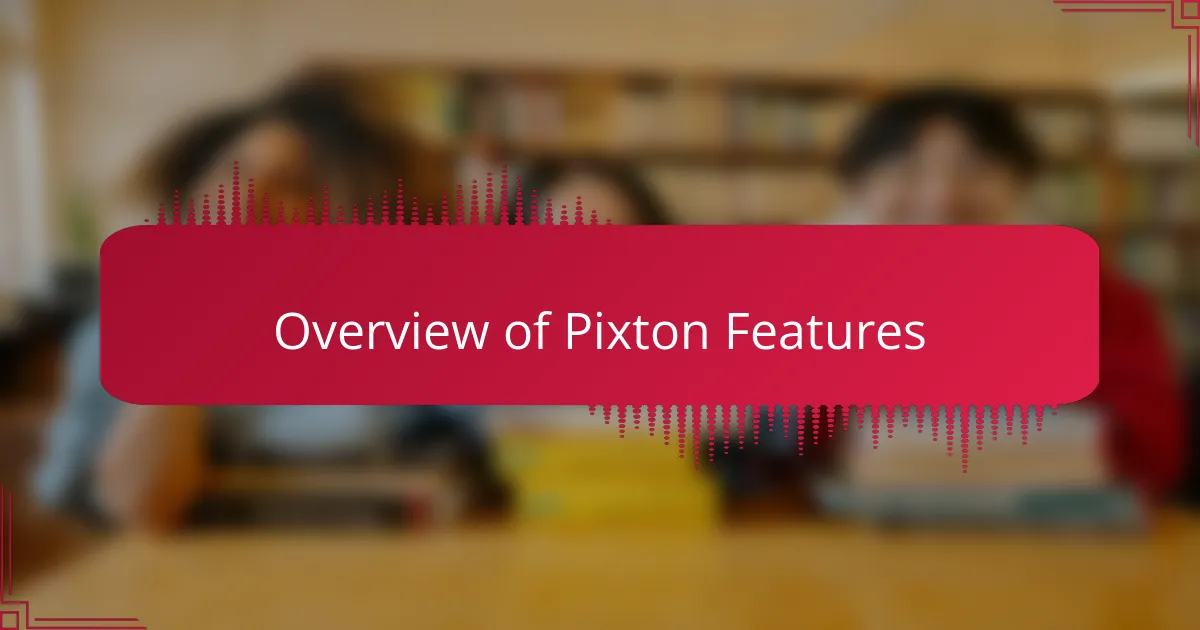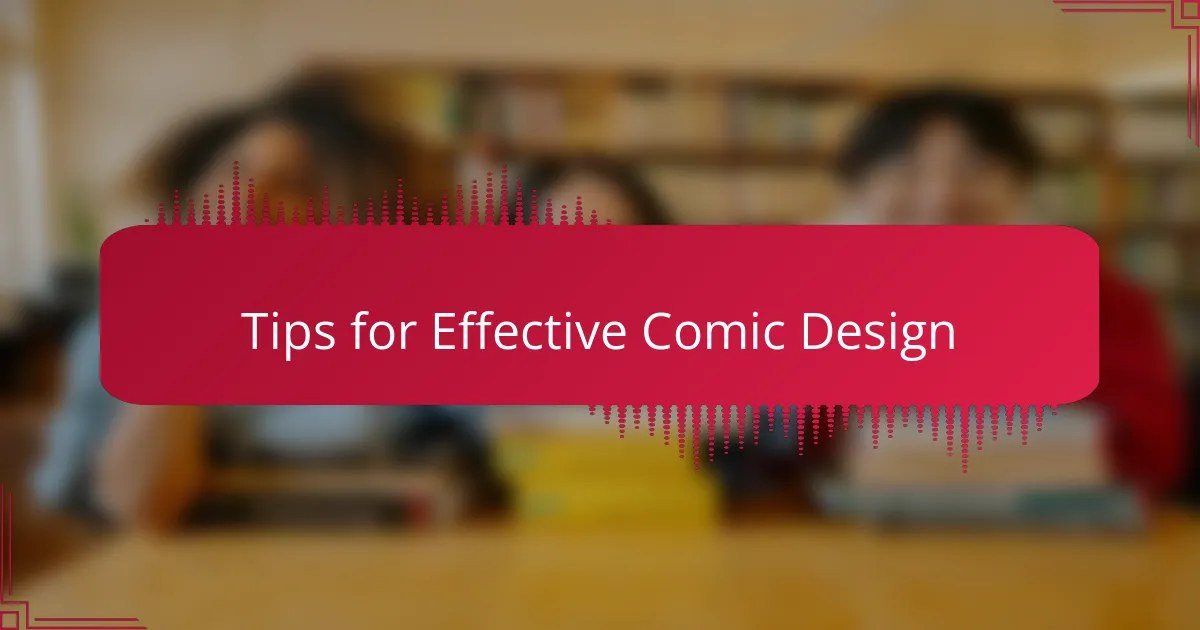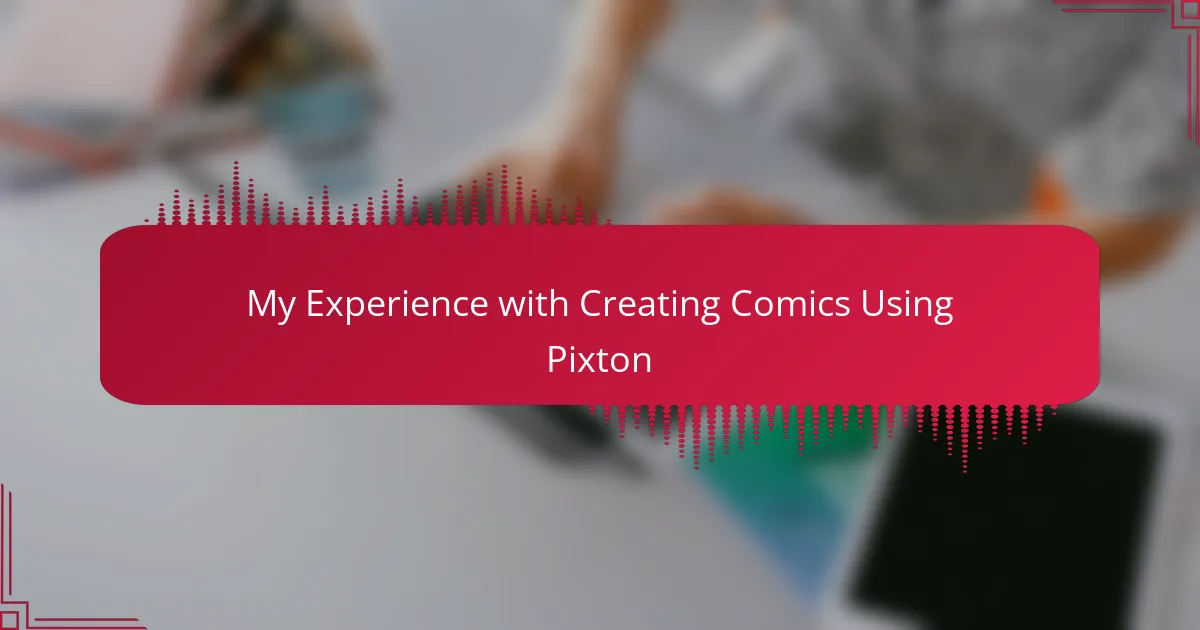Key takeaways
- Pixton is a user-friendly platform that simplifies comic creation with customizable templates and characters.
- Collaboration features in Pixton enhance creative projects by allowing real-time feedback and teamwork.
- Effective comic design emphasizes simplicity, color choice, and varied panel sizes to improve readability and engagement.
- Common challenges in comic creation include developing a cohesive storyline, deep character evolution, and maintaining visual consistency.

Introduction to Comic Creation Resources
Creating comics can be an exhilarating journey, and having the right resources can make all the difference. That’s where platforms like Pixton come into play. When I first stumbled upon Pixton, I was amazed by how user-friendly it was, allowing me to bring my characters and stories to life without needing to be a master artist.
As I explored Pixton, I found that it offered a rich variety of tools and templates that catered to both beginners and seasoned creators. It truly transformed the way I approached comic creation, giving me the freedom to focus on storytelling rather than getting bogged down by technical hurdles. My experience was not just about making comics; it was about expressing myself and connecting with others through my narratives.
- User-friendly interface for easy navigation
- A broad selection of customizable templates and characters
- Tools for adding dialogue and sound effects
- Collaborative options for working with others
- Community support and resources for feedback and inspiration

Overview of Pixton Features
Pixton offers an impressive suite of features that makes comic creation accessible and fun. I remember the first time I used Pixton; it felt like stepping into a world where my imagination could run wild without the usual limitations. The platform allows users to design characters, customize scenes, and add dialogue easily, which made the daunting task of comic creation feel like play.
One standout feature is the character creator, where users can design avatars with unique traits, emotions, and poses. This flexibility lets me breathe life into my characters, shaping them to reflect their personalities perfectly. The storytelling tools streamline the process, as they allow for quick scene changes and dialogues, making it easy to keep the creative flow going. Overall, these features cater to both novice and experienced creators, providing everyone a chance to express their vision.
- Intuitive character creation with diverse customization options
- Extensive library of backgrounds and props for scene setting
- Easy-to-use dialogue and speech bubble options
- Templates and storyboarding tools that simplify comic layout
- Collaboration features for sharing and receiving feedback with peers
- Animation capabilities for adding movement to comics

Benefits of Using Pixton
Using Pixton has truly been a game-changer for my comic creation process. One of the standout advantages I appreciate is the user-friendly interface that eliminates intimidation for newcomers. When I first started, I remember feeling overwhelmed by other platforms. However, Pixton made it easy to navigate, allowing me to jump right into creating without feeling lost.
Another benefit that really adds value is the extensive library of customizable templates and characters. I love how I can easily select different backgrounds or tweak character features to fit my story. This variety helps me unleash my creativity without getting bogged down in technical stuff. Have you ever struggled to find the right look for a character? With Pixton, I have tons of options at my fingertips, so I can focus on crafting a compelling narrative instead.
Additionally, the collaborative features within Pixton stand out for me. It’s fantastic to be able to work with others on comics, sharing ideas and receiving feedback in real-time. I recall a recent project where I teamed up with a friend, and we brainstormed together using Pixton. The community support and engagement made our experience not just productive, but incredibly enjoyable. Have you thought about how collaboration could elevate your own work? With Pixton, it feels like each comic becomes a shared adventure, enriching the creative journey.

My Personal Journey with Pixton
I remember the first time I stumbled upon Pixton. It was a game-changer for me as an aspiring comic creator. The platform’s user-friendly interface made it easy for me to bring my ideas to life without needing advanced drawing skills.
As I started experimenting, I found that Pixton allowed my creativity to flourish. I loved customizing characters and settings to fit my story’s vibe. It was exhilarating to see my characters come alive on the screen, expressing emotions and participating in their narratives.
My journey with Pixton has not only enriched my storytelling but has also built my confidence as a creator. I genuinely believe this tool can empower anyone with a story to tell and a vision to share.
| Aspect | Pixton |
|---|---|
| User-Friendliness | Highly intuitive and easy to navigate, even for beginners |
| Customization | Extensive options for characters, backgrounds, and props, enhancing creative freedom |
| Collaboration | Allows for team projects and sharing, fostering a community of creators |

Tips for Effective Comic Design
When it comes to effective comic design, simplicity is key. I’ve found that a clean layout not only makes the comic more readable but also allows the story to shine. Balance is also crucial; too many elements can overwhelm the reader, so focusing on a few strong visuals can be far more impactful.
Color choices play a vital role, as they evoke emotions and set the tone for the story. When I experimented with Pixton, I was surprised at how much my mood changed just by altering the color schemes. For instance, a vibrant palette brought a light-hearted feel, while muted tones conveyed a sense of seriousness. It’s a simple yet powerful tool in capturing the essence of your narrative.
Another aspect I learned is the importance of pacing through panel design. Varying the size of panels in my comics helped to create tension and drama. It’s fascinating how a few tweaks in design can enhance the reader’s experience and keep them engaged.
| Tip | Description |
|---|---|
| Keep it Simple | Avoid clutter to enhance readability and focus on storytelling. |
| Choose Colors Wisely | Use color palettes to evoke emotions that resonate with your narrative. |
| Play with Panel Sizes | Vary panel sizes to control pacing and add dynamism to your comic. |

Common Challenges in Comic Creation
Creating comics isn’t always a smooth ride, and I’ve faced my fair share of challenges along the way. One common hurdle is crafting a cohesive storyline. There were times I felt my ideas were all over the place, and it made it tough to create a clear narrative arc. Have you ever hit a wall trying to connect scenes? Finding the right flow often requires stepping back and re-evaluating my story elements, sometimes even rewriting scenes to achieve that perfect balance.
Another significant challenge I encountered was managing character development. I initially created characters that were one-dimensional, lacking depth and relatability. It took me a while to understand that characters need to evolve, just like the story itself. Have you grappled with making your characters feel real? Adding backstory and emotional layers helped me connect my audience with the characters on a deeper level. It’s a learning curve, but incredibly rewarding once everything clicks into place.
Lastly, I often struggled with visual consistency throughout my comics. When I experimented with different styles in Pixton, there were moments when my panels felt disjointed. I learned that sticking to a defined artistic style not only enhances readability but also establishes a strong visual identity. Have you noticed how jarring inconsistencies can distract from your story? By paying attention to visual coherence, I found my comics resonated better with my readers, allowing them to immerse themselves in the narrative uninterrupted.
